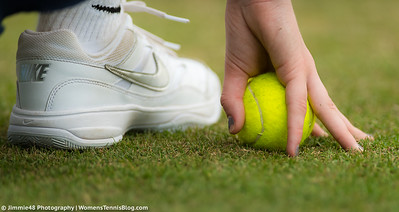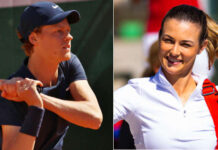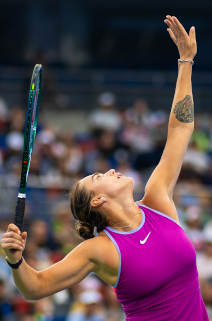We all know that choosing the right tennis shoes and racquet significantly impacts our game, but the importance of tennis balls should not be overlooked. Not all tennis balls are the same and picking the right ones for your surface, location and style of play does make a huge difference in your tennis experience.
Most tennis balls are filled with air, have a rubber core and are covered in a fibrous felt that can be made of synthetic materials or wool. Even though this definition is true for the majority of tennis balls, they are not all the same, and there is a range from premium to value options.

Value comparison: Premium vs. championship vs. entry-level tennis balls
Premium tennis balls offer durability, consistency and resilience as they feature more natural wool and a woven felt. They provide a plusher feel on contact and a more consistent bounce. They maintain that “pop” sound better over time and the felt stays fluffy longer. Lastly, their premium natural rubber cores contain the air pressure for longer, compared to synthetic types of rubber. Balls that fall into this category include: Wilson US Open, Dunlop ATP, Pro Penn Marathon, and Tecnifibre Court.
Championship tennis balls are a grade lower than premium. They have more synthetic fibers in the felt and less real wool. They have needle-punch felt instead of the woven construction used on the premium balls. Examples are Penn Championship and Wilson Championship.
Entry-level tennis balls, such as Prince Pressureless Tennis Balls and Penn Bucket Pressureless Tennis Balls, employ needle-punching technology and are made predominantly from synthetic nylon fibers. Their performance is poor compared to premium and championship balls. Their thicker core construction makes them feel heavier and creates more shock on the racquet and player’s arms.
Usage comparison: Tennis balls by type
Extra duty, also known as XD balls (hard courts)
Extra duty tennis balls are suitable for concrete, asphalt, and other hard surfaces. Their thick felt typically makes them more durable and balances out the fast speed of hard courts. Even though their longevity is superior, over time they lose their bounce.
Regular duty, also known as RD balls (slower courts such as clay)
Having less felt than extra duty, regular duty balls are recommended to be used on softer and slower courts such as clay. The felt construction on these balls is made in such a way to balance out the slower surfaces and make the ball faster. RD balls are a good fit for indoor tennis. They can be used on outdoor hard courts as well, but their longevity will be inferior to XD balls. Just as XD, RD balls are pressurized and extended use decreases their bounce.
Pressureless (beginners, recreational players, practice/ball machines)
Presureless tennis balls have a longer life span than regular pressurized balls and they don’t lose their bounce over time. Because of these properties, they are recommended for beginners, recreational players and as a training tool.
A downside of these balls is that they are heavier, which means that they put more pressure on your racquet and consequently your arm. Hence, presureless tennis balls are not used in competition.
High altitude (elevation above 4,000 feet)
At high altitudes where the air is thinner, we should use tennis balls that are pressureless and less pressurized. This helps counteract the effects of high altitude that makes balls fly faster and bounce higher. By ensuring a more normal bounce, this type of balls provides a better playing experience.
Junior foam balls (ages 3-5)
Foam balls for children ages three to five are the largest and slowest in their category.
Junior red balls (ages 6-8)
Red balls should be used by juniors between the ages of six and eight. They are firmer and a bit smaller than foam balls.
Junior orange balls (ages 9-10)
Intended for nine- and ten-year-olds, orange balls have even more pressure in the ball.
Junior green dot balls (ages 11-13)
Designed for children between the ages of eleven and 13, green balls are the closest to the regular balls used by adult players.
For additional information about tennis balls, I advise you to watch this Tennis Warehouse podcast. Moreover, check out Tennis Warehouse’s guide: How to choose the right tennis balls.







